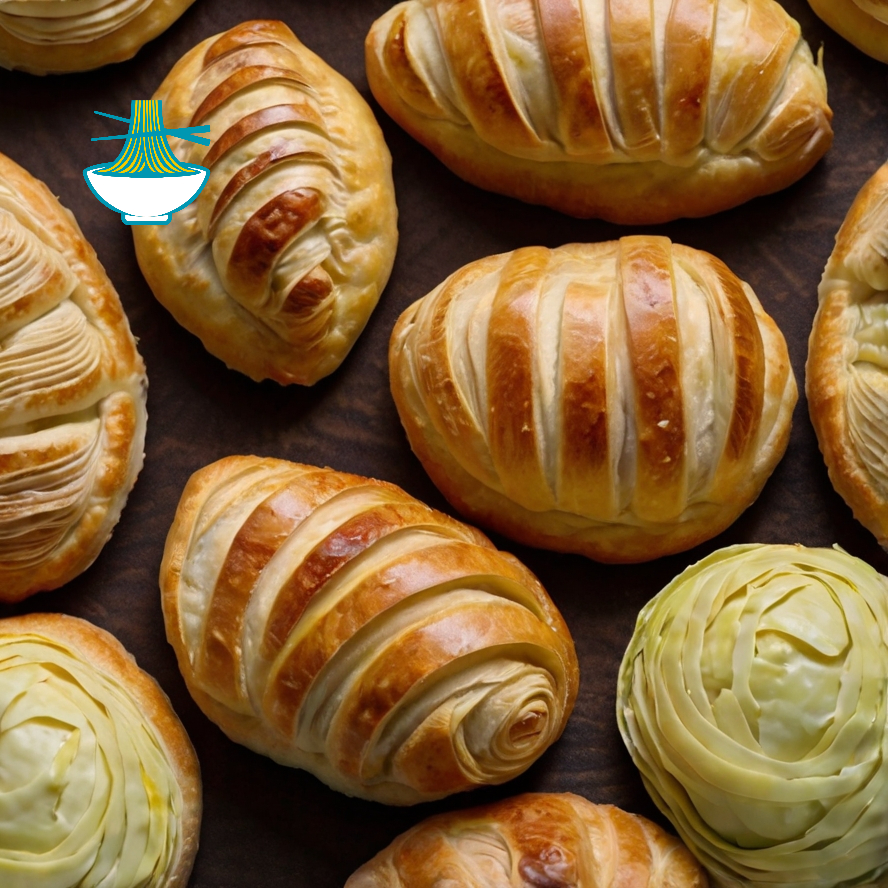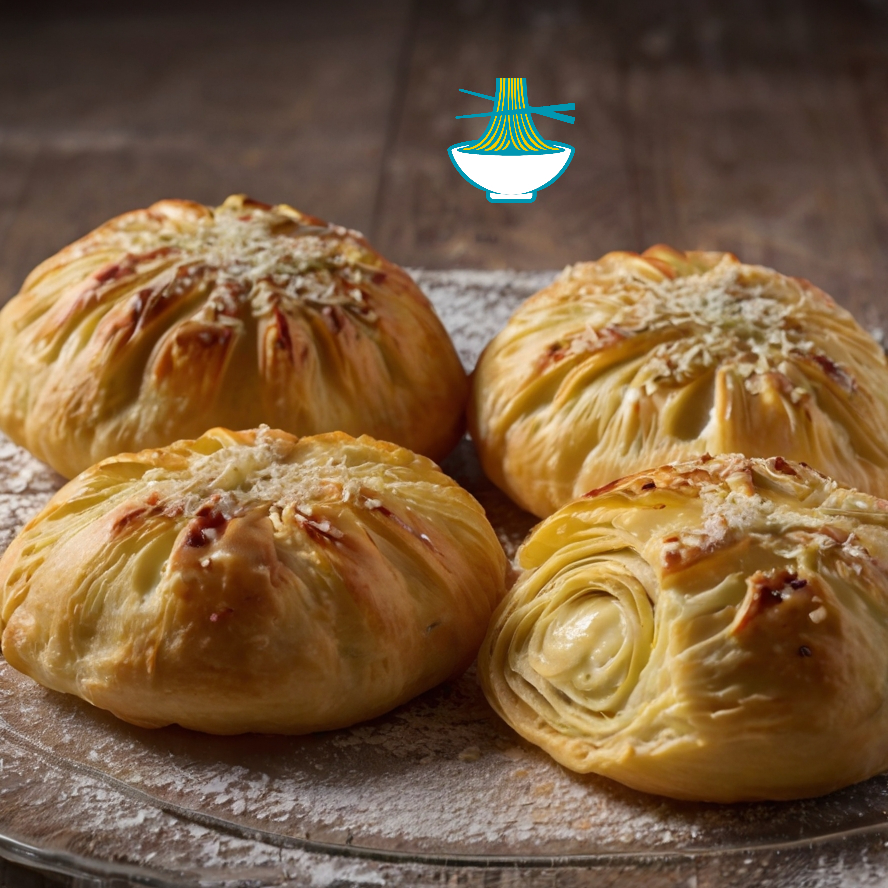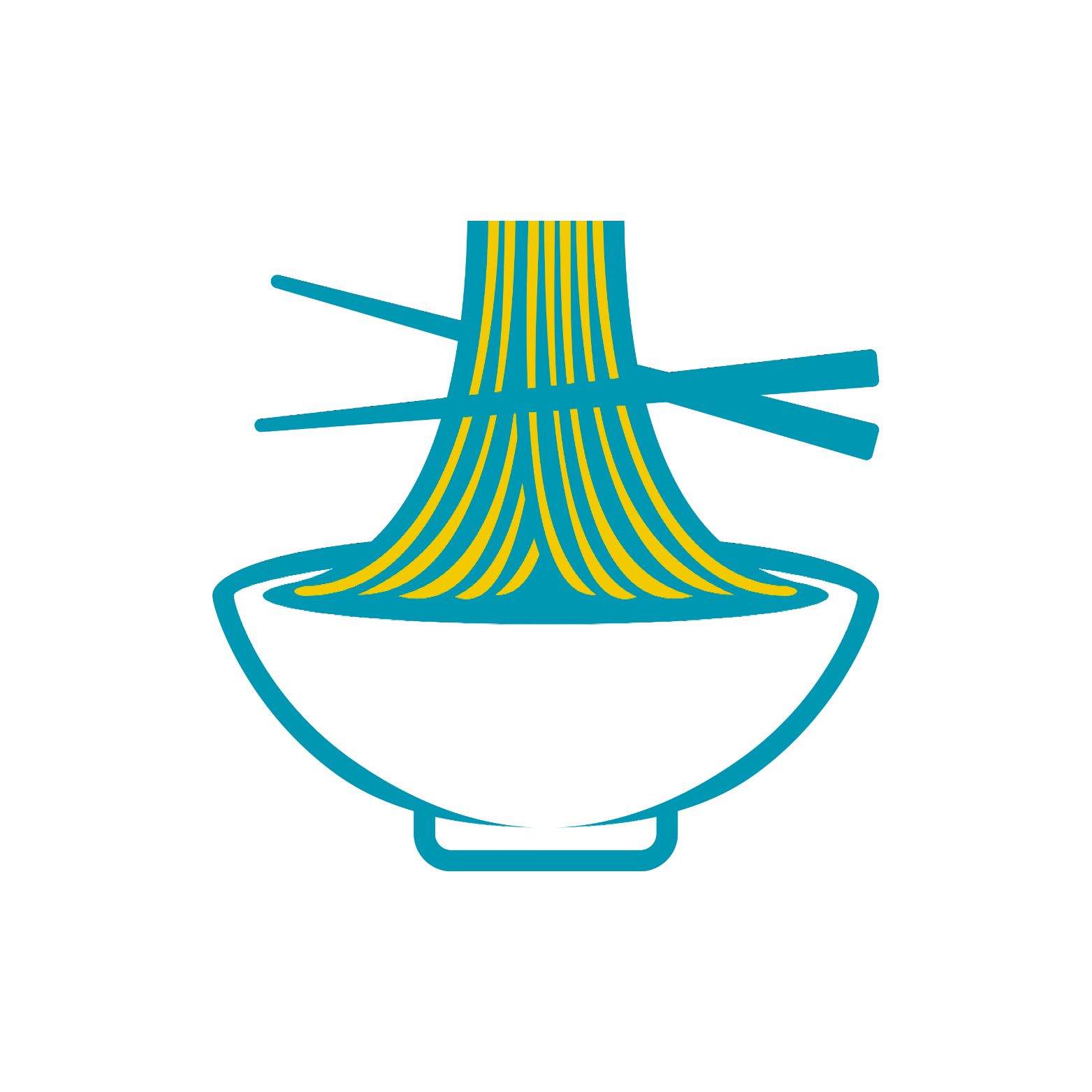Plăcintă: A traditional pastry with thin dough and diverse fillings like cheese, potato, cabbage, or apple. Originating from Eastern Europe, it boasts a rich culinary history, often enjoyed as a savory or sweet treat.
Ingredients:
- Thin dough (filo or puff pastry sheets)
- Filling of choice: cheese, potatoes, cabbage, apples, etc.
- Optional: sugar, salt, butter or oil for brushing
Method:
- Preheat oven to 350°F (180°C) for baked plăcintă or heat oil in a pan for fried version.
- Prepare filling ingredients: shred cheese, cook and mash potatoes, chop cabbage or apples finely.
- Lay out thin dough sheets and place a generous amount of filling along one edge.
- Carefully fold the dough over the filling to form a pocket or roll, sealing the edges.
- For baked plăcintă, place on a baking sheet, brush with butter or oil, and bake for 20-25 minutes until golden brown.
- For fried plăcintă, heat oil in a pan and fry each side until crispy and golden brown.
- Once cooked, remove from heat and let cool slightly before serving. Enjoy your delicious plăcintă!
Nutrition Value:
Thin Dough (Filo or Puff Pastry Sheets):
- Calories: Both filo and puff pastry sheets are relatively high in calories due to their butter content. A serving size (approximately one sheet) can range from 50 to 100 calories.
- Carbohydrates: These sheets are primarily made of carbohydrates, mainly from flour. A sheet may contain around 10-15 grams of carbohydrates.
- Fat: These dough types are rich in fat, particularly saturated fat from butter or oil used in the dough. A sheet may contain around 3-5 grams of fat.
- Sodium: Generally, the sodium content is low unless additional salt is added during the preparation.
- Cholesterol: The cholesterol content is also low unless large amounts of butter or oil are used.
Benefit: The thin dough provides energy from carbohydrates and fat. However, due to the high-fat content, it should be consumed in moderation.
Filling of Choice (Cheese, Potatoes, Cabbage, Apples, etc.):
- Calories: The calorie content of the filling varies depending on the ingredients used. For example, cheese and potatoes are higher in calories compared to cabbage or apples.
- Carbohydrates: The carbohydrates in the filling come from sources like potatoes, cabbage, or apples. Cheese may also contribute some carbohydrates.
- Protein: Cheese and potatoes provide protein, while cabbage and apples contribute lesser amounts.
- Fat: Cheese and any added butter or oil in the filling can increase the fat content. Cabbage and apples are naturally low in fat.
- Sodium: Depending on the ingredients and seasonings used, the sodium content can vary.
- Cholesterol: Cheese and any animal products in the filling may contain cholesterol.
- Vitamins and Minerals: The filling ingredients offer various vitamins and minerals. For example, potatoes provide potassium and vitamin C, cabbage offers vitamin K and vitamin C, and apples provide fiber and vitamin C.
Benefit: The filling provides a diverse range of nutrients, including carbohydrates for energy, protein for muscle repair and growth, and vitamins and minerals for overall health. Optional Ingredients (Sugar, Salt, Butter, or Oil for Brushing):
Optional Ingredients (Sugar, Salt, Butter, or Oil for Brushing):
- Calories: These ingredients can add additional calories to the dish, particularly sugar, butter, or oil.
- Carbohydrates: Sugar contributes carbohydrates, while salt, butter, or oil may not add significant carbohydrates unless used in large amounts.
- Fat: Butter or oil used for brushing adds fat content.
- Sodium: Salt contributes sodium content.
- Cholesterol: Butter may contain cholesterol.
Benefit: These optional ingredients primarily enhance flavor and texture. While they may not contribute significant nutritional benefits, they can make the dish more palatable. However, excessive consumption of added sugars, salt, or saturated fats should be avoided for better health outcomes.


Comments